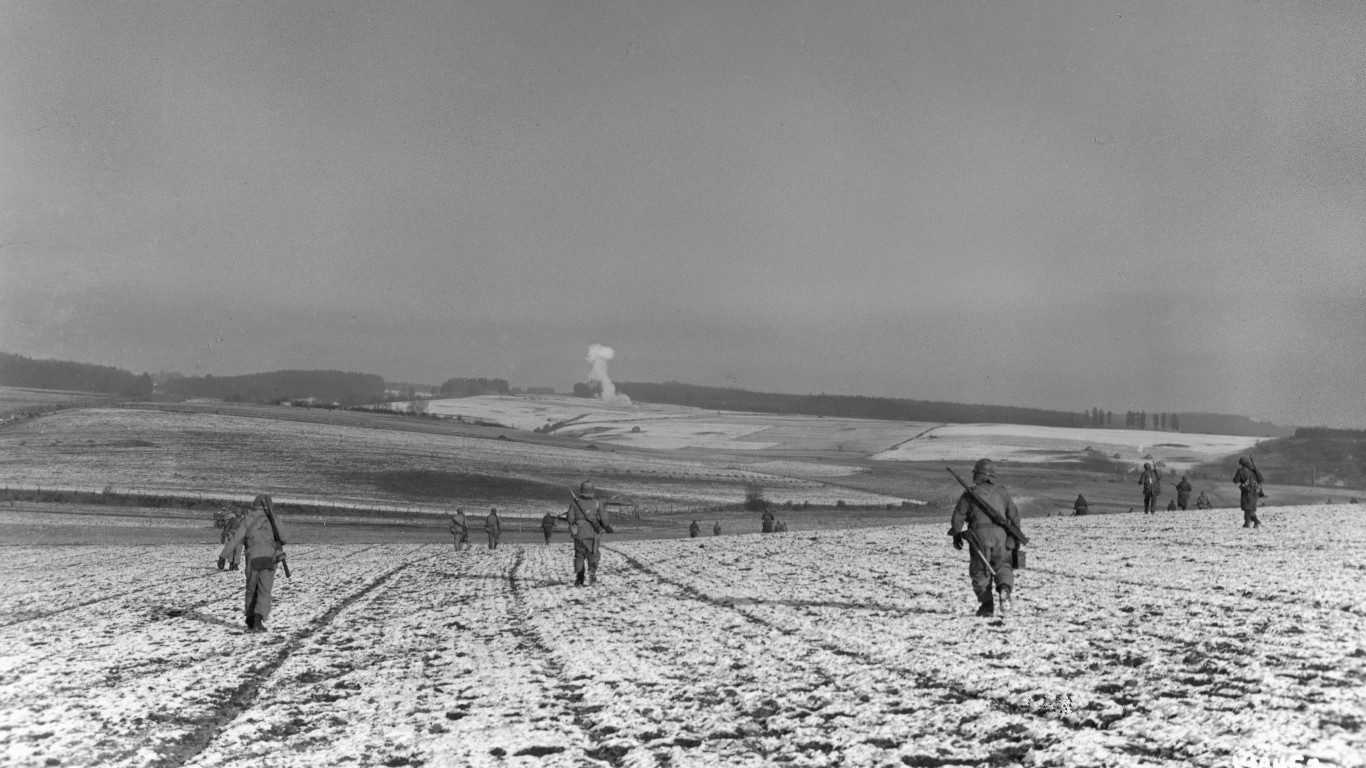
“The most shocking fact about war is that its victims and its instruments are individual human beings,” wrote Aldous Huxley in an essay called “Words and Behaviour,” published in 1936, “and that these individual beings are condemned by the monstrous conventions of politics to murder or be murdered in quarrels not their own….”
That’s a sobering reminder that each casualty of war is not just a statistic but an actual human being. Whether a soldier or a civilian, every metric represents a life interrupted by a conflict most had no hand in creating.
As the world watches the current war in the Ukraine unfold daily in headlines and news broadcasts, ghosts from battles fought not so long ago still loom on the edges of the public consciousness. Wars aren’t just material for the history books. Some of the worst atrocities happened in the modern era.
World War II ranks as the deadliest conflict in history. While an exact number is hard to pin down, some estimates have estimated total military and civilian deaths as up to 80 million, with millions more wounded, captured, or otherwise displaced. (These are the deadliest battles in U.S. history.)
The First World War, which had its own share of deadly battles and massive destruction. Over 9 million soldiers died, with another 21 million more wounded. Civilian casualties reached close to 10 million.
24/7 Tempo has compiled a list of the deadliest battles of the modern era, based on sources, such as History.com, War History Online, the Imperial War Museum’s website, Britannica and World Atlas. While most of these battles occurred during the two world wars, the Vietnam War, Sino-Japanese War, and Chinese Civil War are included.
Click here to see the most devastating battles in recent history
In some cases, individual battles were included as part of larger engagements – for instance, the Battle of Kiev as part of Operation Barbarossa. Note that “casualties” doesn’t necessarily mean deaths; the term encompasses not only those killed in battle but also the wounded, the missing, and prisoners of war. (These are the wars in which the most Americans died.)
32. Tet Offensive during Vietnam War
> Estimated casualties: 100,000
> Combatants: United States, South Vietnam / North Vietnam, Viet Cong
> Location: South Vietnam
Launched during the Vietnamese lunar new year holiday in January 1968, the Tet Offensive was a major military campaign that pitted North Vietnamese military and Viet Cong forces against the South Vietnamese and their American allies, targeting major command centers. It encompassed the Battle of Saigon and several other major battles. Both sides sustained heavy losses, but the offensive was a propaganda coup for the Communists’ propaganda and helped sour the American public still further on the war.
[in-text-ad]
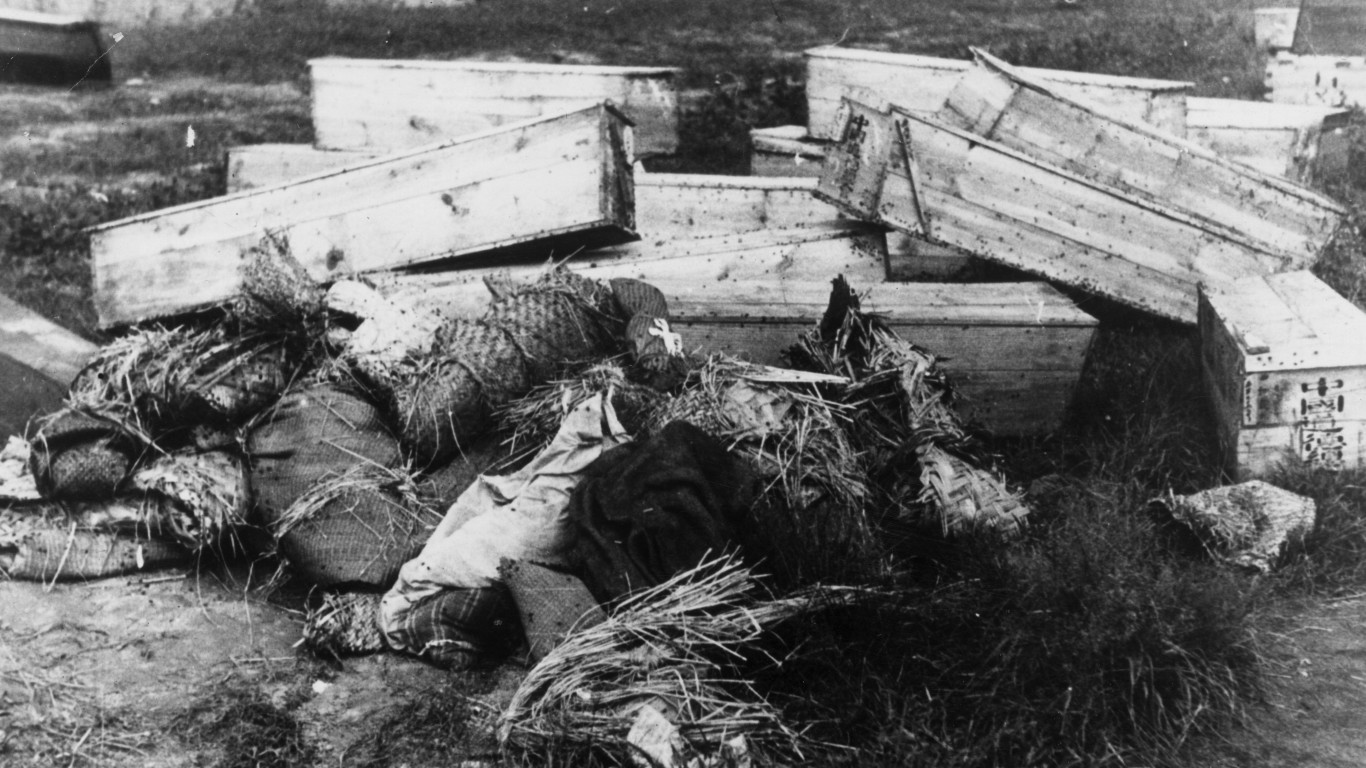
31. Battle of Xinkou during Sino-Japanese War
> Estimated casualties: 200,000
> Combatants: China / Japanese Empire
> Location: China
The Battle of Xinkou, which raged in October and November of 1937, was a major engagement between China’s National Revolutionary Army and the Imperial Japanese Army early in the Second Sino-Japanese War. The Chinese forces ultimately lost the battle, with 100,000 casualties.
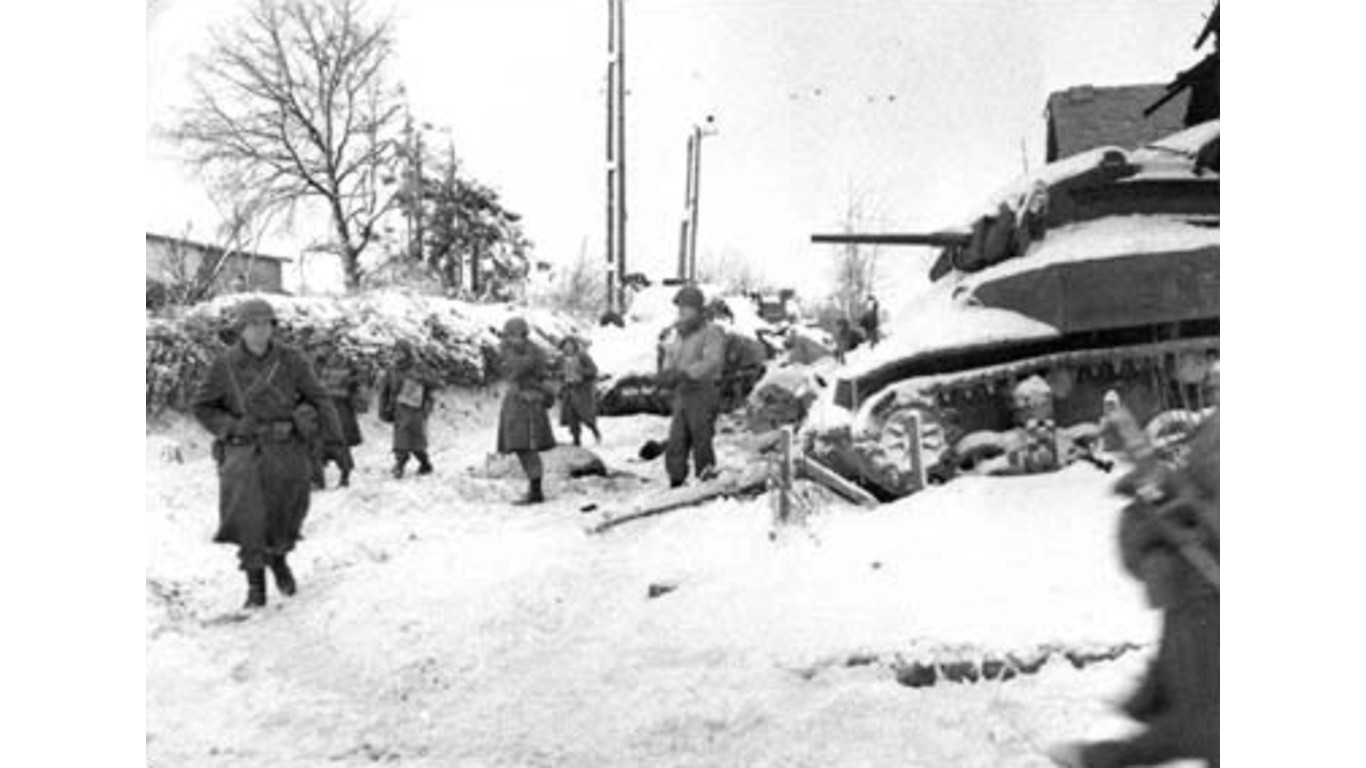
30. Battle of the Bulge during World War II
> Estimated casualties: 218,000
> Combatants: Western Allies / Germany
> Location: Belgium, Luxembourg
Also referred to as the Ardennes Offensive, World War II’s Battle of the Bulge marked the final German offensive on the Western Front. Running from December 1944 to January 1945 through the Ardennes, the heavily forested region between Belgium and Luxembourg. The Germans were initially successful, but sustained too many losses, and after about four months later, they surrendered to Allied forces. This is considered the biggest and bloodiest single battle fought by the United States in World War II and the third-deadliest campaign in American history.
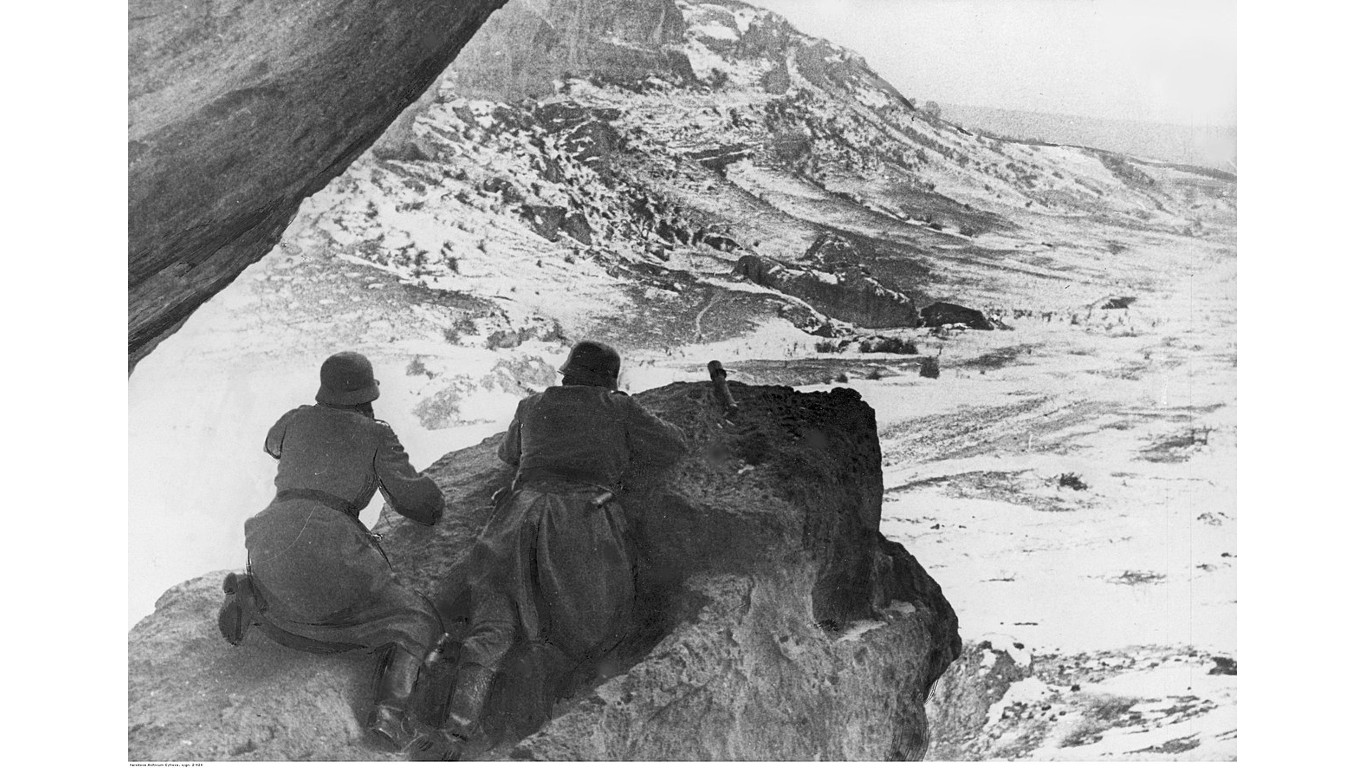
29. Siege of Sevastopol during World War II
> Estimated casualties: 236,000
> Combatants: Germany / Soviet Union
> Location: Soviet Union
In June 1941, the Axis powers of Germany and Romania carried out two assaults against the Soviet Union for Sevastopol, a port in the Crimea on the Black Sea. The second assault proved successful, and in July 1942, the Soviet Union was forced to surrender. The Soviet Separate Coastal Army suffered over 200,000 casualties over both sieges.
[in-text-ad-2]
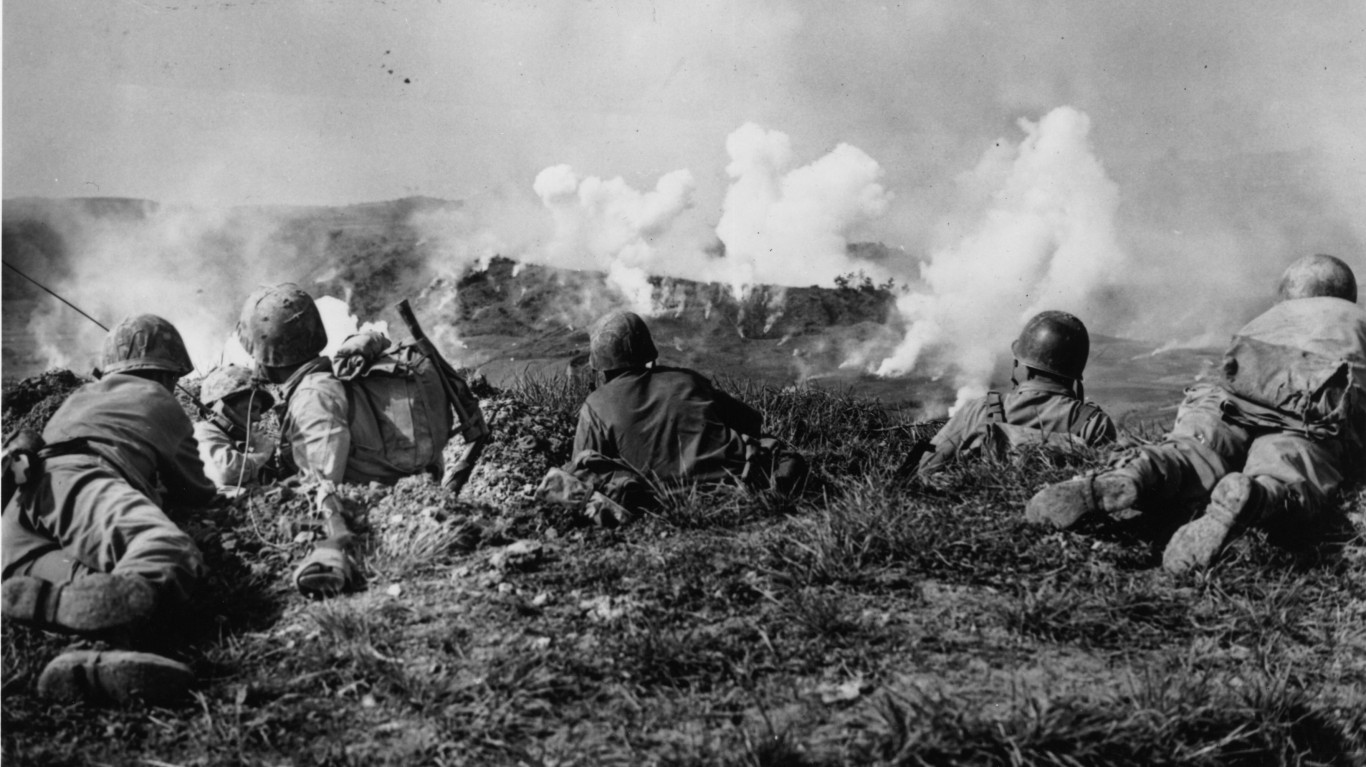
28. Battle of Okinawa during World War II
> Estimated casualties: 242,000
> Combatants: United States / Japanese Empire
> Location: Okinawa
With the counterintuitive codename Operation Iceberg, the initial invasion of the subtropical island of Okinawa in April 1945 was the largest amphibious assault in the Pacific during World War II. The 82-day battle was also considered the bloodiest in the Pacific, with plenty of military casualties between the U.S. Army and Marine Corps and the Imperial Japanese Army. After the United States’ victory, President Harry S. Truman would drop the atomic bomb on Hiroshima and Nagasaki. Japan’s subsequent surrender marked the end of World War II.
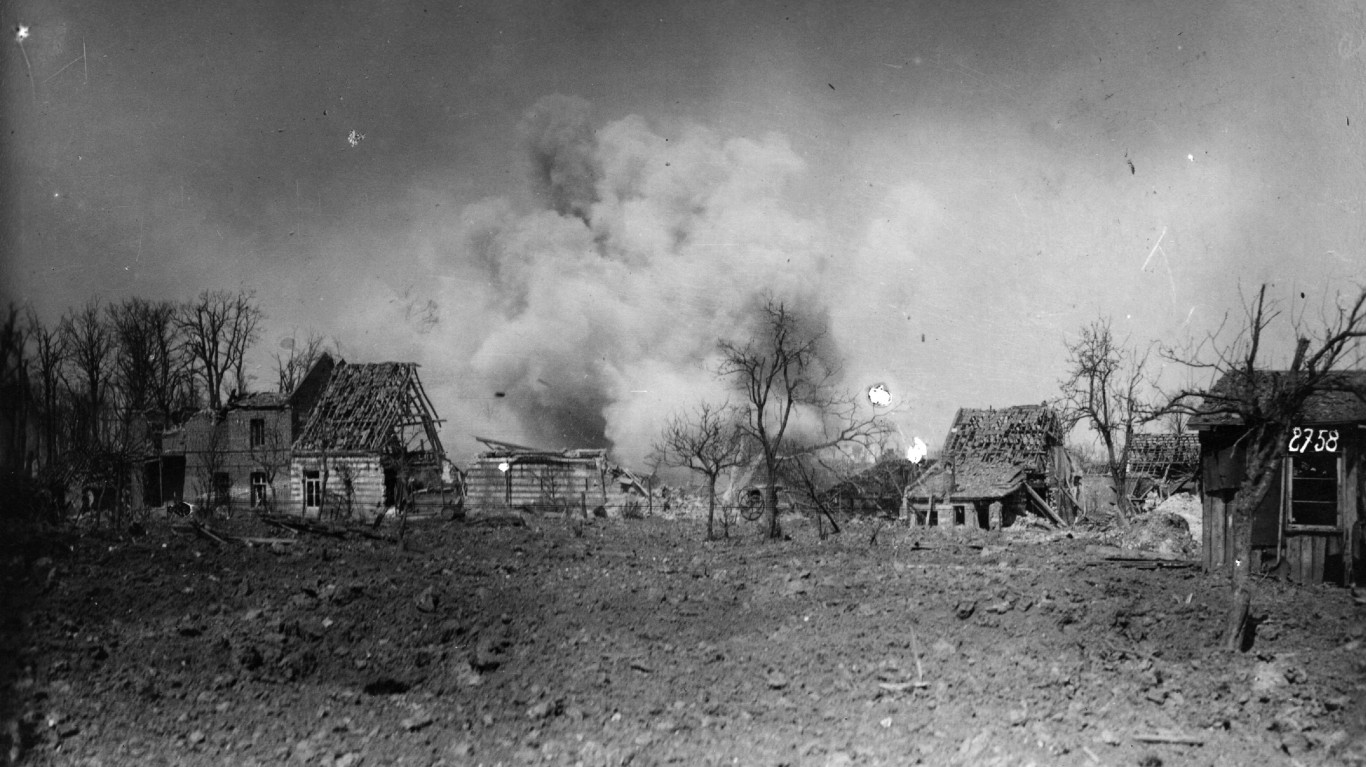
27. Battle of Arras during World War I
> Estimated casualties: 278,000
> Combatants: German Empire / British Empire
> Location: France
From April to May 1917, British troops launched attacks on German defenses near the French city of Arras on the Western Front, resulting in a battle culminating in a costly stalemate. While the British made headway, their casualties numbered about 160,000. In hindsight, the battle’s impact during World War I was negligible.
[in-text-ad]
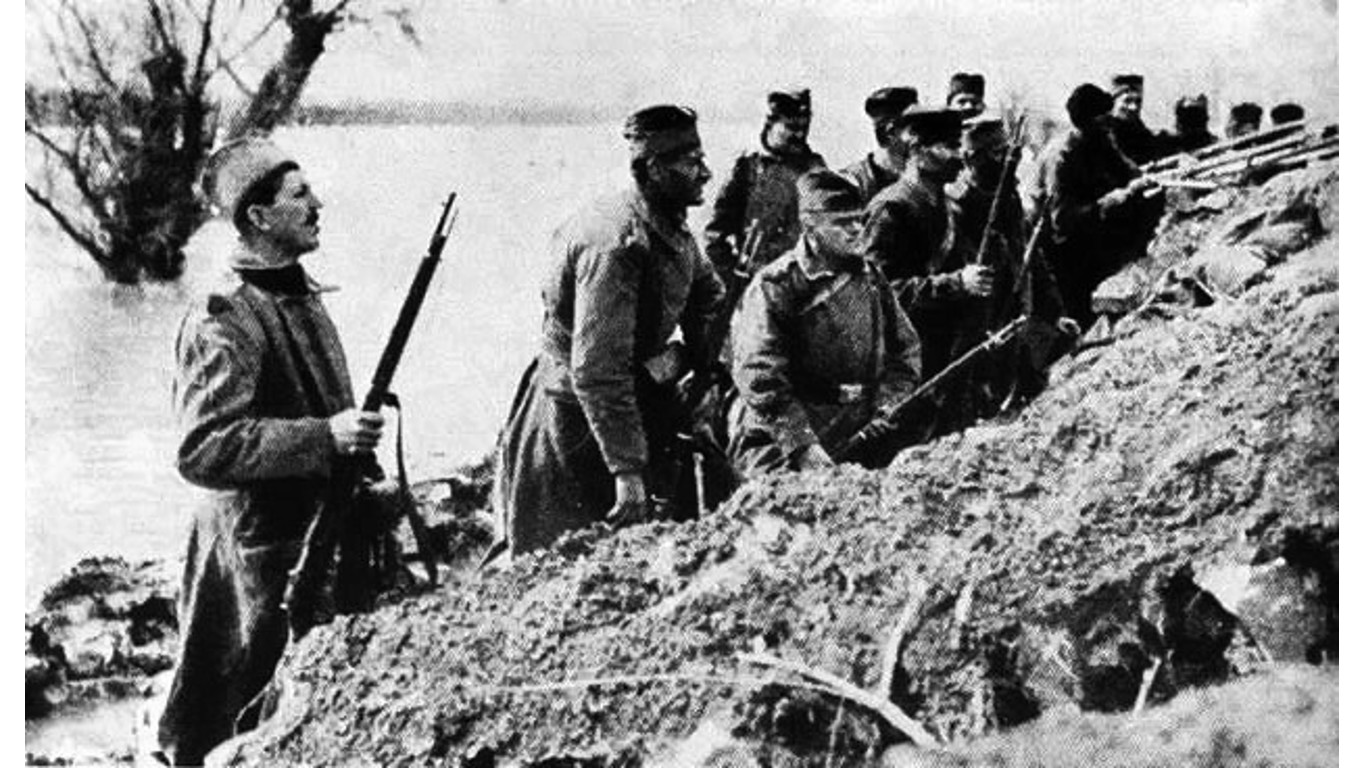
26. Battle of Kolubara during World War I
> Estimated casualties: 316,000
> Combatants: Austria-Hungary / Serbia
> Location: Serbia
Austria-Hungary and Serbia each sustained significant losses during the Battle of Kolubara, fought in November and December 1914 during the Serbian Campaign. Hostilities began when the Austro-Hungarians reached the Kolubara River, launching an assault on Serbian defensive positions and forcing the Serbian army to retreat. For a couple of days, the Austro-Hungarians controlled Serbia’s capital city of Belgrade, but the Serbian Army was able to take it back after a surprise counter-attack.

25. Battles of Tannenberg and Masurian Lakes during World War I
> Estimated casualties: 347,000
> Combatants: German Empire / Russian Empire
> Location: Germany / Poland
Fought in the early days of the war, the Battle of Tannenberg saw the Russian Second Army virtually annihilated by the Germans, with 92,000 were captured and 78,000 killed or wounded, and about only 10,000 escaping. The following week, the First Battle of the Masurian Lakes would leave most of the Russian First Army destroyed as well, with about 100,000 killed, wounded, or captured. As a result of these two defeats, the Russians were largely incapacitated until the spring of 1915, when German forces pushed them back into the heart of Russia.
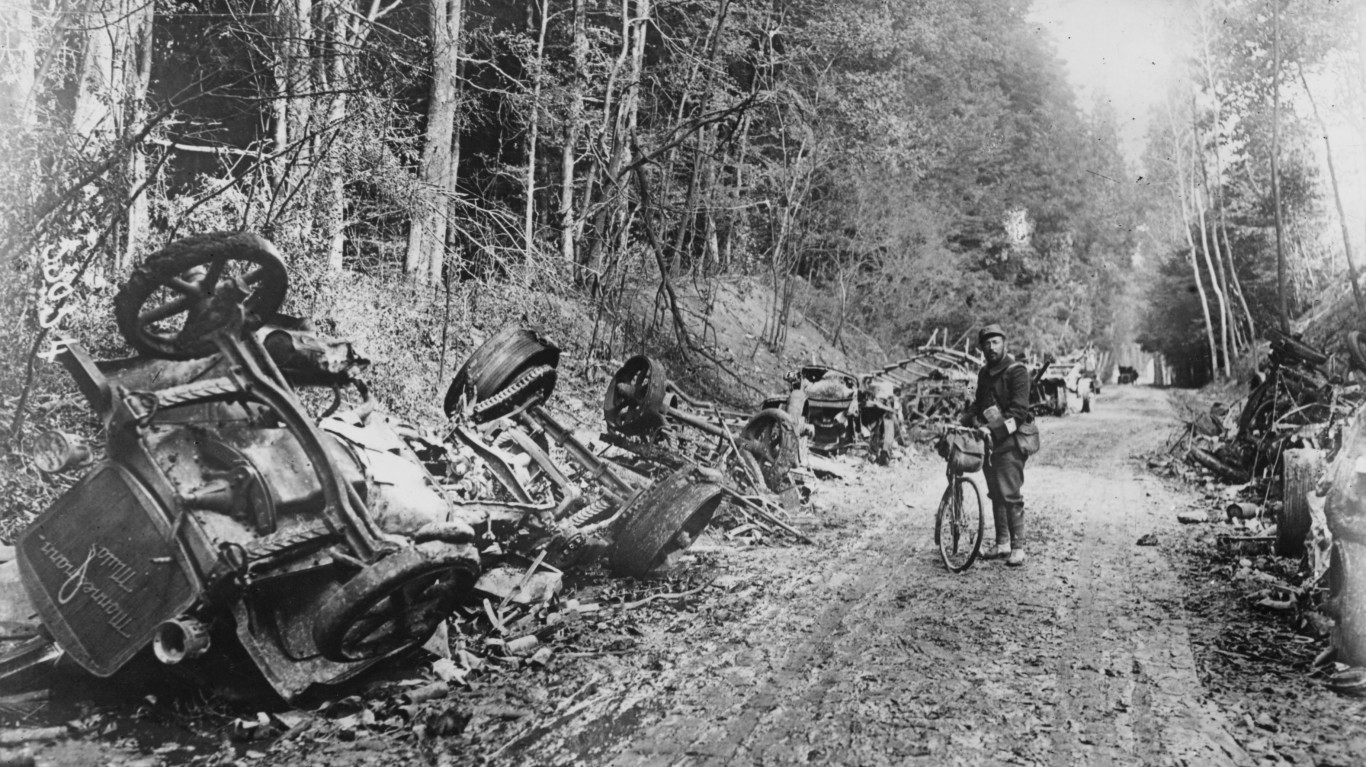
24. Battle of the Aisne during World War I
> Estimated casualties: 355,000
> Combatants: France / German Empire
> Location: France
Three battles were fought along the Aisne River in northern France during World War I. The Second Battle of the Aisne, running from April to May 1917 between the French and Germans, resulted in 355,000 casualties total. French Commander-in-Chief Robert Nivelle has believed the battle could end the war in a matter of days, but it ended up being a disaster for the French army, and little territory was gained.
[in-text-ad-2]

23. Battle of Shanghai during World War II
> Estimated casualties: 400,000
> Combatants: China / Japanese Empire
> Location: China
The Battle of Shanghai was the first encounter between the Chinese National Revolutionary Army and the Imperial Japanese Army. Lasting from August to November 1937, this battle is often considered the start of World War II. After over three months of fighting on land, in the air, and at sea, Japan emerged victorious, with China’s casualties alone totaled some 270,700.

22. Siege of Budapest during World War II
> Estimated casualties: 422,000
> Combatants: Soviet Union, Romania / Germany, Hungary
> Location: Hungary
Soviet and Romanian forces besieged the Hungarian capital, defended by Hungarian and German troops, for 50 days, beginning in December 1944.The city surrendered in February 1945, giving the Allies a strategic victory in their push towards Berlin, but it was a costly triumph, costing the Soviets and Romanians more than 320,000 casualties. In addition, about 38,000 civilians within the city died from starvation, military action, and the mass execution of Jews by Hungary’s far-right nationalist Arrow Cross Party.
[in-text-ad]
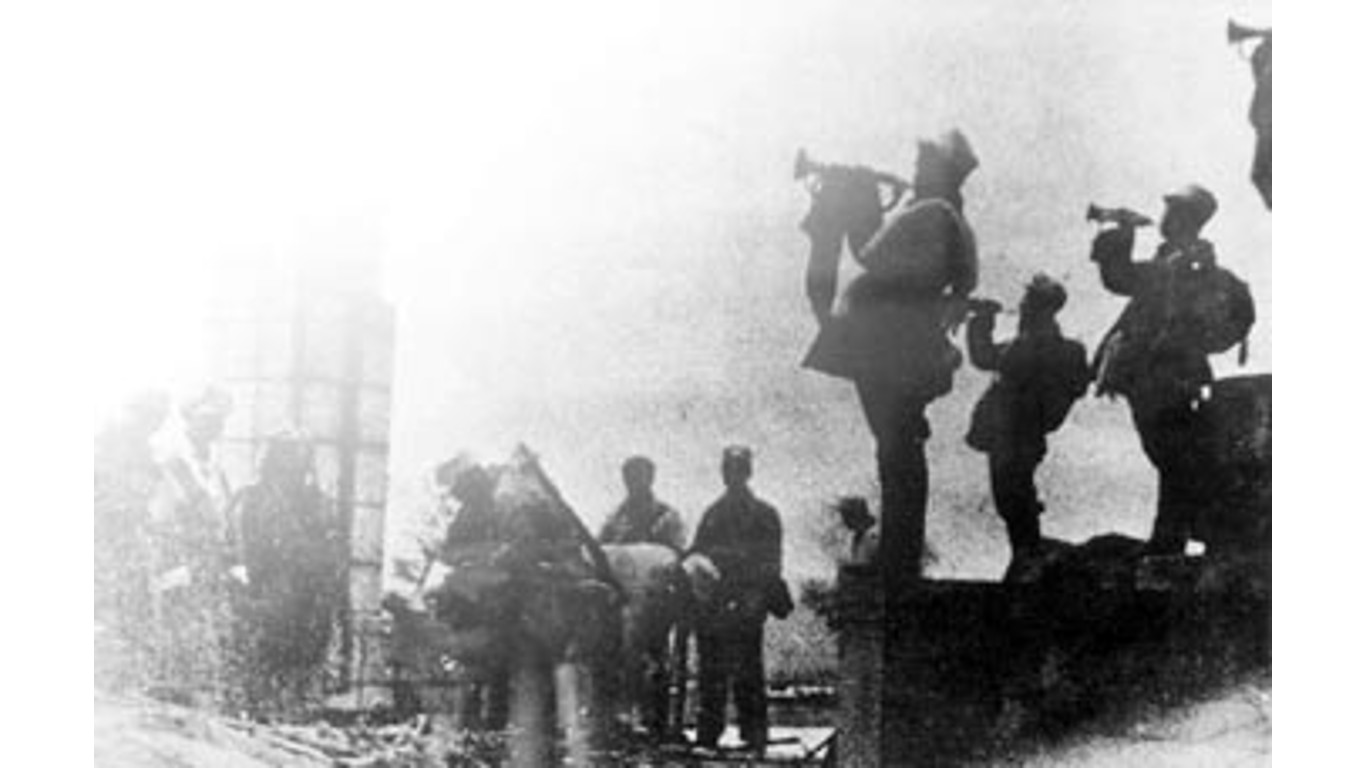
21. Siege of Changchun during Chinese Civil War
> Estimated casualties: 425,000
> Combatants: Chinese Communist Party / Chinese Nationalist Party
> Location: China
During the siege of Changchun, somewhere between 150,000 to 200,000 civilians starved to death. From May through October 1948, the People’s Liberation Army prevented civilians from leaving the city, which was defended by Nationalist forces, effectively exhausting the food supply. The Chinese public was largely unaware of the civilian casualties until “White Snow, Red Blood,” a novel dealing with the tragedy, was released by former People’s Liberation Army officer Zhāng Zhènglóng in 1989.

20. Battle of Manila during World War II
> Estimated casualties: 500,000
> Combatants: United States, Philippines / Japanese Empire
> Location: Philippines
This month-long battle during the Philippines campaign of 1944 to 1945 pitted American and Philippine forces against Japanese troops in the capital city of Manila. The battle, which ended almost three years of Japanese military occupation in the Philippines, would leave the city mostly destroyed and over 100,000 Filipino civilians dead, along with 1,010 U.S. and 16,665 Japanese soldiers.
19. Fall of France during World War II
> Estimated casualties: 500,000
> Combatants: Germany, Italy / France, Great Britain, United States
> Location: Belgium, the Netherlands, Luxembourg, France
The Battle of France, also known as the Western Campaign, is the overall name for Germany’s invasion of Belgium, Luxembourg, and the Netherlands in May and June 1940. In just over six weeks, German armed forces assaulted Belgium and the Netherlands, drove the British Expeditionary Force from continental Europe, captured Paris, and forced the surrender of the French government. While German casualties were estimated around 156,000, hundreds of thousands of casualties were reported from the invaded countries.
[in-text-ad-2]

18. Battle of Gallipoli during World War I
> Estimated casualties: 500,000
> Combatants: British Empire, France / Ottoman Empire
> Location: Turkey
The Gallipoli Campaign was an unsuccessful attempt by the Allied Powers to weaken the Ottoman Empire, which was allied with the Germans, by taking control of the sea route to Russia. If the Allied fleet could control the Dardanelles strait, they could easily bombard the Ottoman capital at Constantinople and sever it from the Asian part of the empire. From February 1915 to January 1916, each side lost about 250,000 in the fighting before the campaign was abandoned, with the forces fielded by Australia and New Zealand being particularly devastated. The battle ultimately led to the Turkish War of Independence and the declaration of the Republic of Turkey eight years later.
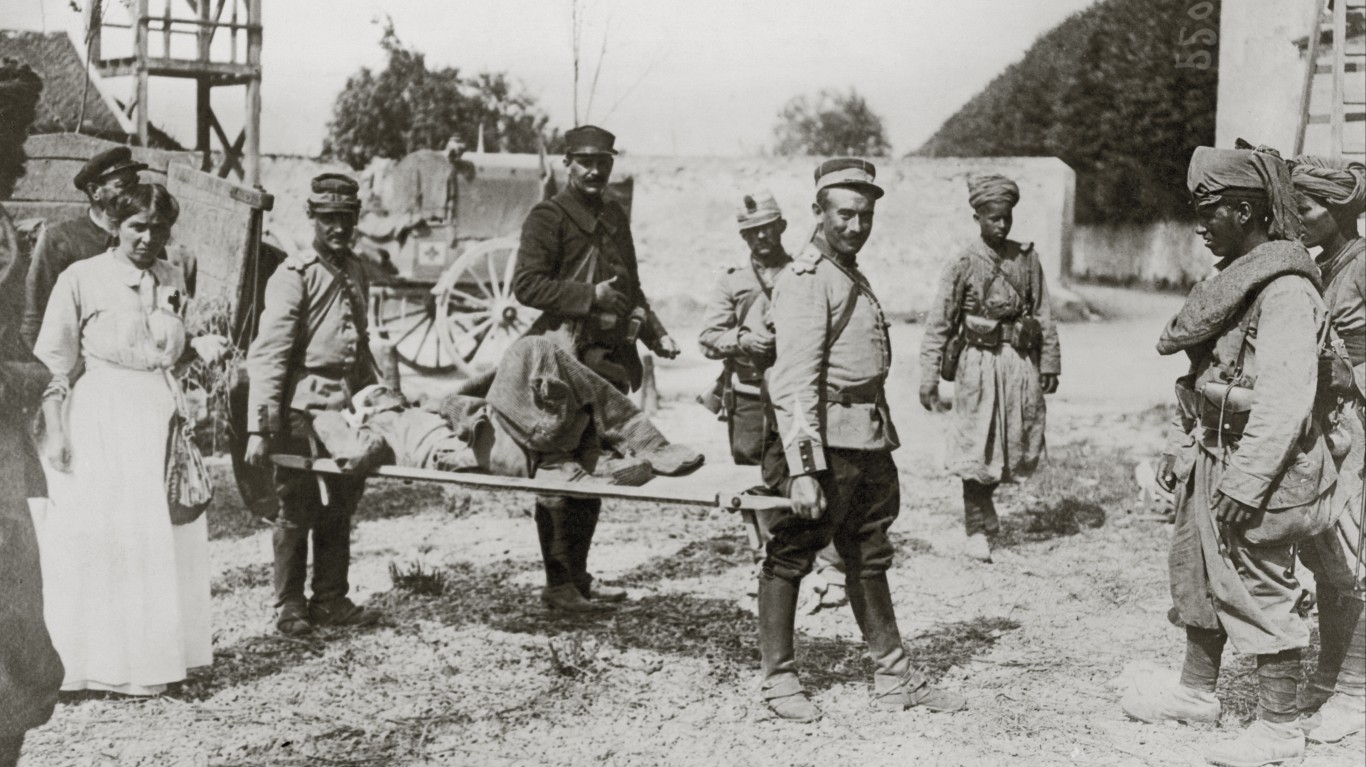
17. Battle of the Marne during World War I
> Estimated casualties: 519,000
> Combatants: France / German Empire
> Location: France
More than 2 million soldiers participated in the First Battle of the Marne in September 1914,, with casualties numbering about 500,000, evenly divided between the French and Germans. The multiple skirmishes around the Marne River Valley ended in a victory for the Franco-British units against the German armies in the west. The Battle of the Marne was the second great battle on the Western Front, next to the Battle of the Frontiers.
[in-text-ad]
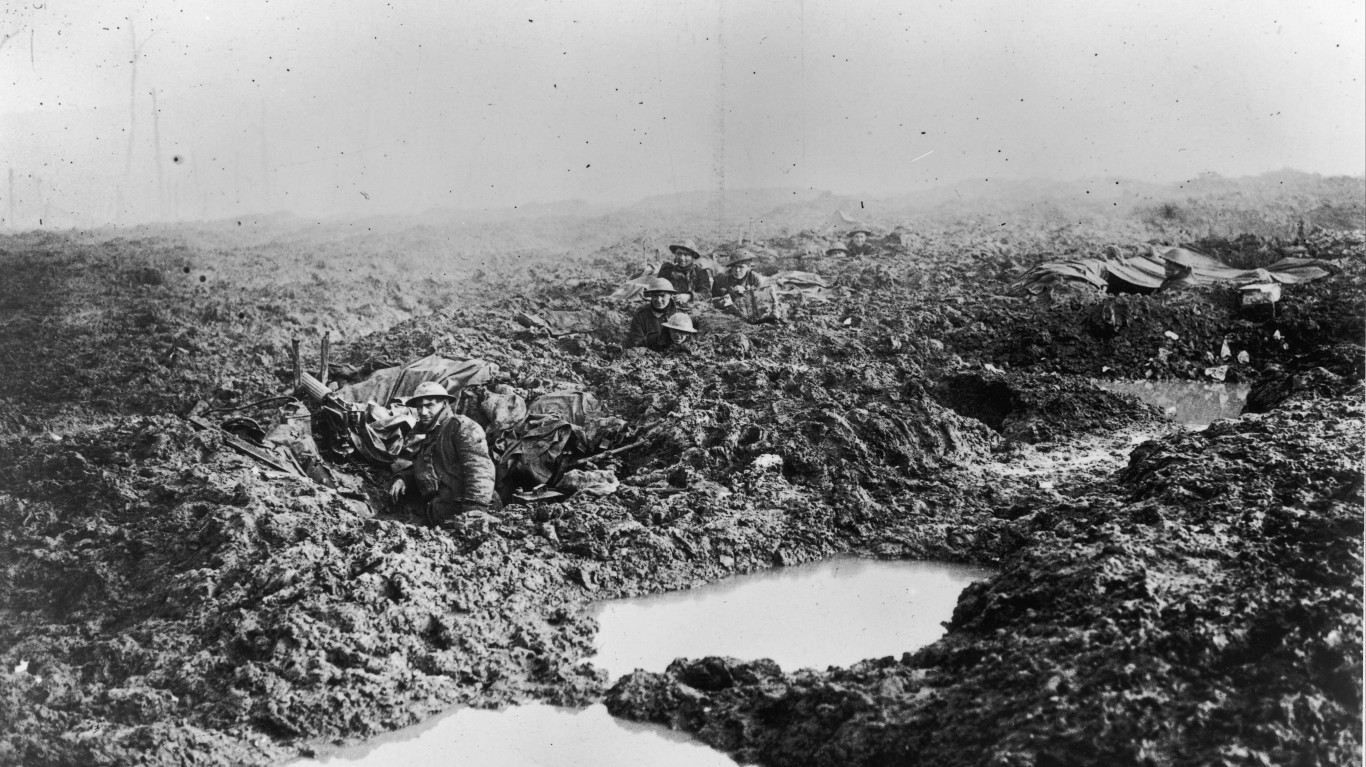
16. Battle of Passchendaele during World War I
> Estimated casualties: 580,000
> Combatants: British Empire, France / Germany
> Location: Belgium
In this battle, also known as the Third Battle of Ypres, Allies faced off against the German Empire on the Western Front from July to November 1917, fighting for control of the ridges south and east of the Belgian city of Ypres in West Flanders. The battle ended when the Canadian Corps captured Passchendaele, though local attacks continued into December and early in the new year. The actual casualty figures have been disputed a number of times over the decades. The allies suffered somewhere between 240,000 and 448,614 and the Germans’ likely between 217,000 and 400,000.
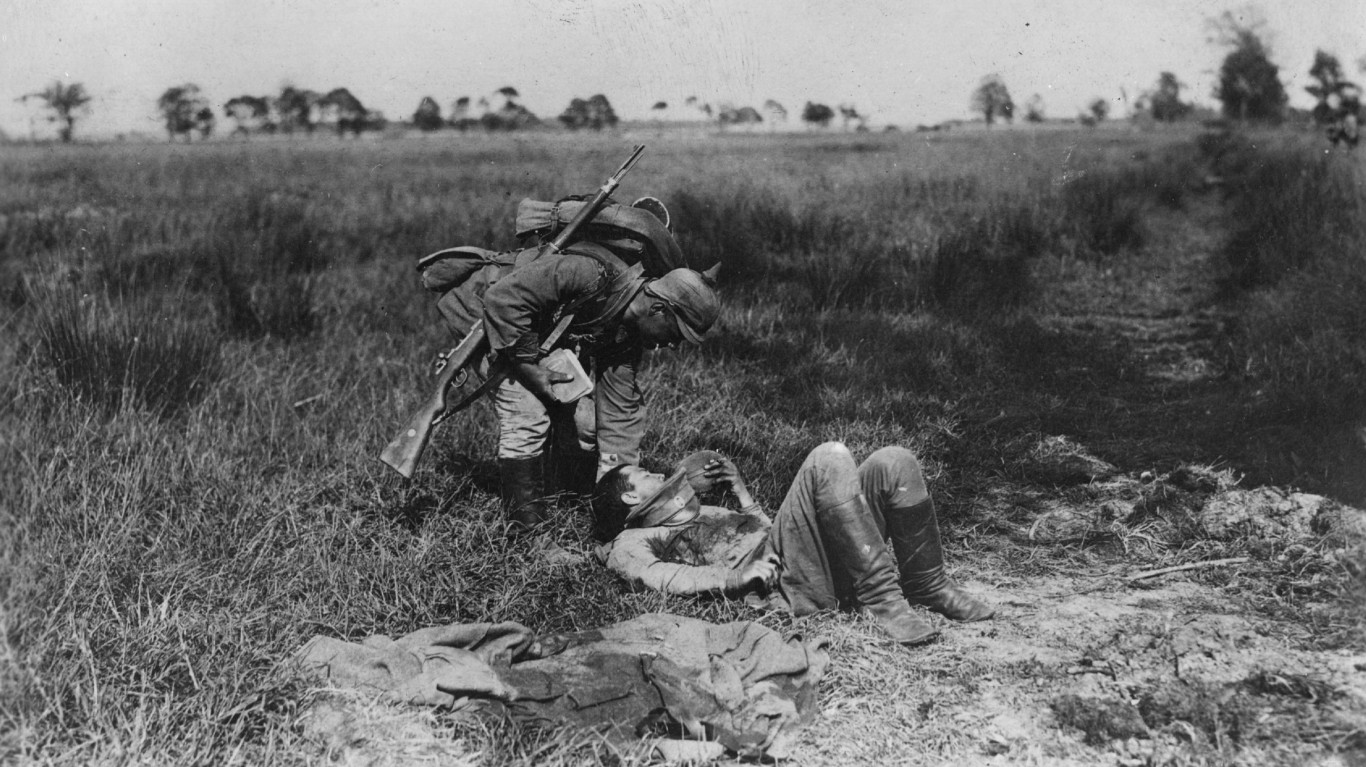
15. Battle of Galicia during World War I
> Estimated casualties: 655,000
> Combatants: Russian Empire / Austria-Hungary
> Location: Modern-day Ukraine
The Battle of Galicia was fought between Russia and Austria-Hungary in 1914, early in the war in what is now western Ukraine. The Austro-Hungarians were defeated and lost Galicia, while the Russians captured Lemberg – modern-day Lviv – and ruled Eastern Galicia for about nine months, until their defeat at Gorlice and Tarnów. Historians have debated the number of casualties. They estimate the Russians sustained between 200,000 and 300,000 losses and Austria-Hungary’s between 324,000 and 420,000.

14. Battle of Verdun during World War I
> Estimated casualties: 750,000
> Combatants: France / German Empire
> Location: France
Raging from February to December 1916 in northeastern France, the Battle of Verdun was World War I’s longest battle. Even though the Germans gained territory, the battle settled into a stalemate, with casualties fast mounting on both sides. French casualties came up to around 400,000, with Germany around 350,000.
[in-text-ad-2]

13. Operation Bagration during World War II
> Estimated casualties: 1.1 million
> Combatants: Germany, Allies / Soviet Union
> Location: Soviet Union, Ukraine, Poland
Operation Bagration was the codename for a massive two-month-long Soviet offensive in portions of what are now Belarus and the Baltic States as well as portions of Ukraine and Poland. It became recognized as the biggest Soviet victory of the war in terms of territory captured and prisoners taken, and was the most resounding defeat in German military history.

12. Gorlice-Tarnów Offensive during World War I
> Estimated casualties: 1.1 million
> Combatants: Central Powers / Russian Empire
> Location: Modern-day Poland
The Gorlice-Tarnów Offensive of May and June 1915 would go down in history as a major military success for Austria-Hungary and Germany on the Eastern Front. The joint campaign of the Central Powers forced the Russian army to retreat, obliterating its front lines and leaving it neutralized for months. It’s estimated that over a million soldiers were lost.
[in-text-ad]
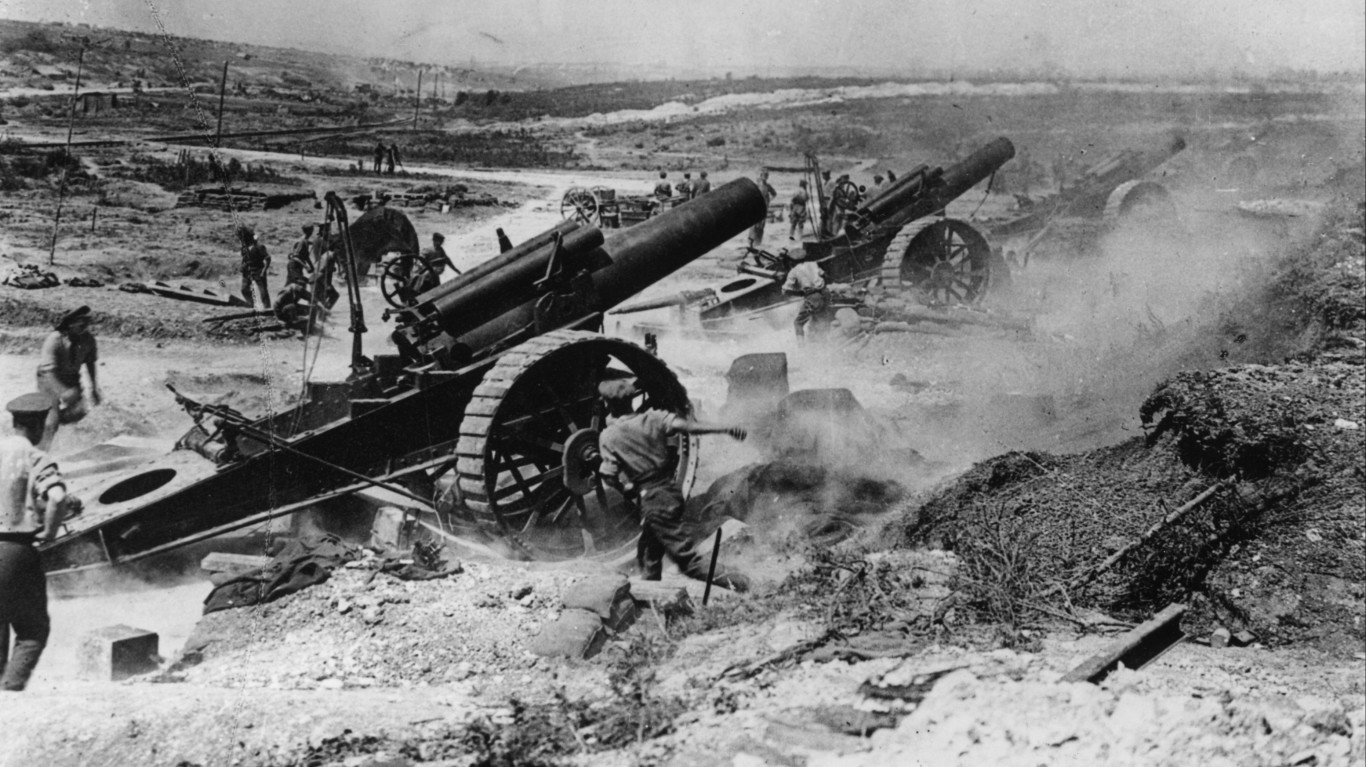
11. Battle of the Somme during World War I
> Estimated casualties: 1.2 million
> Combatants: British Empire, France / Germany
> Location: France
The armies of the British Empire and French Third Republic faced off against the German Empire near the Somme River of France between July and November of 1916. After 141 days, it was unclear who won this battle of attrition, but of the more than 3 million combatants, more than a million were wounded or killed, making this one of the deadliest battles in history.
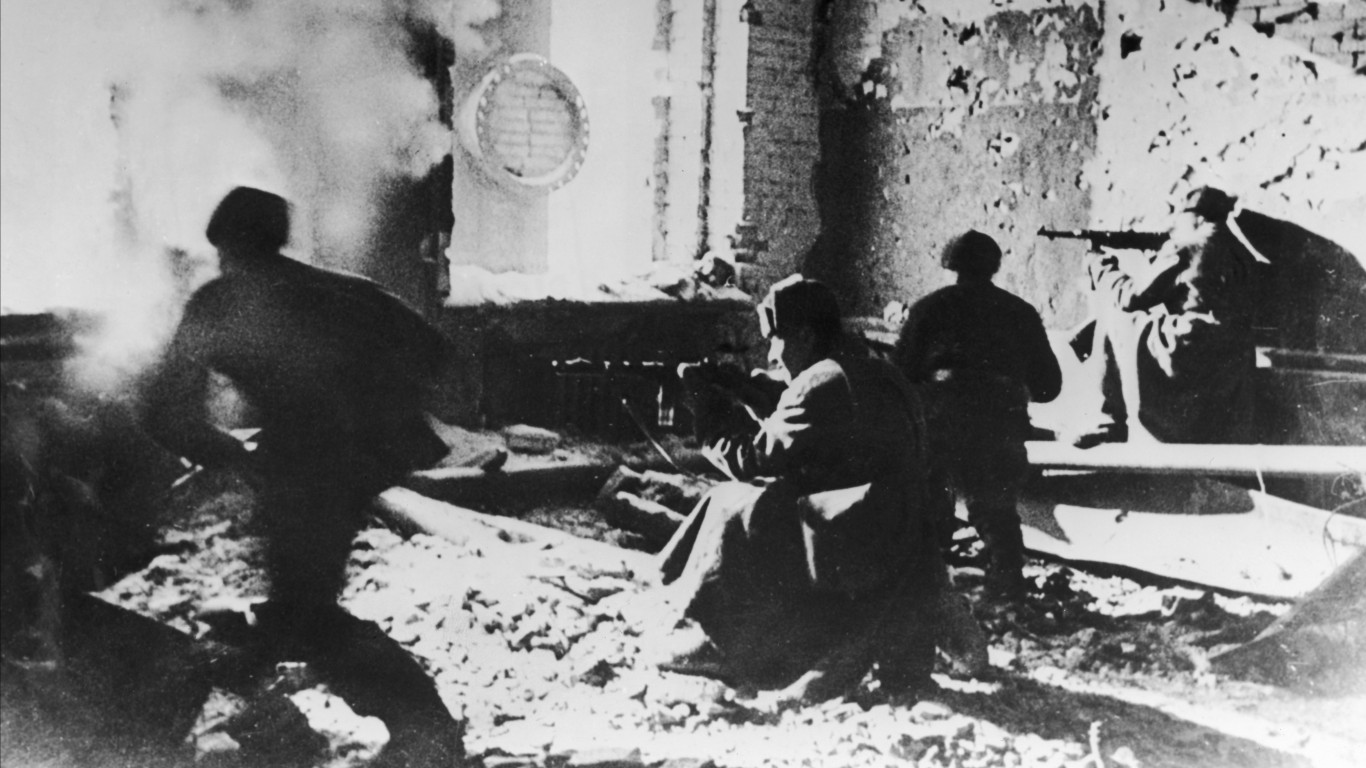
10. Battle of Stalingrad during World War II
> Estimated casualties: 1.25 million
> Combatants: Germany, Allies / Soviet Union
> Location: Soviet Union
Nazi Germany and its allies fought unsuccessfully between August 1942 and February 1943 for control of the city of Stalingrad (later renamed Volgograd) in Southern Russia. Between fierce close-quarters combat and direct air raid assaults on civilians, this is regarded as the war’s single deadliest battle. The battle also marks the first time Hitler’s field armies were forced to surrender during World War II.

9. Battle of Berlin during World War II
> Estimated casualties: 1.3 million
> Combatants: Germany / Soviet Union
> Location: Germany
The Battle of Berlin – which became the Fall of Berlin – was the final major battle of the war in Europe, leading to the surrender of Nazi Germany and the suicide of Adolf Hitler. The Soviets and Nazis fought for just over two weeks before the Red Army took over Germany’s capital. Though the number of civilian casualties is unknown, 125,000 are estimated to have died during the conflict.
[in-text-ad-2]

8. Operation Ichi-Go during World War II
> Estimated casualties: 1.3 million
> Combatants: Japan / China, United States
> Location: China
Operation Ichi-Go was made up of three significant battles between the Imperial Japanese Army forces and China’s National Revolutionary Army, the latter fighting with air support from the U.S. Lasting from April to December 1944, this marked the largest and bloodiest military operation in Japanese history. The Japanese had three objectives: to control the railroad between Beiping and Hong Kong; to link forces in China with those in French Indochina; and to control Allied airfields in southern China. Although the Japanese were essentially successful, the overall effect on the war was marginal. The U.S. could still bomb the Japanese homeland from Saipan and other Pacific bases, and the Japanese lines were spread increasingly thin as they seized more territory.
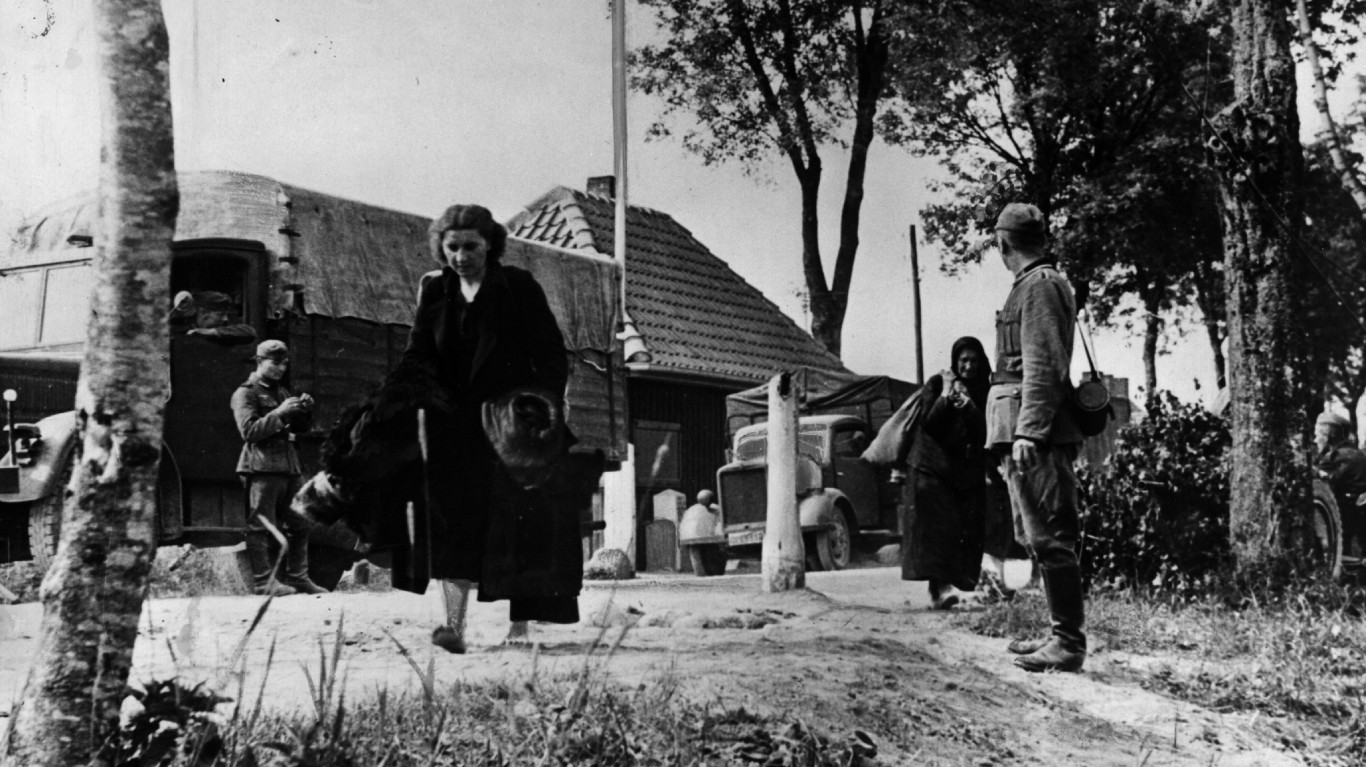
7. Operation Barbarossa during World War II
> Estimated casualties: 1.4 million
> Combatants: Germany, Allies / Soviet Union
> Location: Soviet Union
Through Operation Barbarossa, Nazi Germany hoped to conquer the western Soviet Union and repopulate it with Germans, using some of the conquered people as forced labor and eliminating the indigenous Slavic peoples through mass deportation to Siberia, Germanisation, and genocide. From June 1941 to January 1942, the German armies captured some 5 million Soviet Red Army troops, starving or otherwise killing 3.3 million Soviet prisoners of war, along with millions of civilians. Despite Germany’s initial success, their offensive stalled in the Battle of Moscow at the end of 1941, and the Soviets counterattacked, rendering Operation Barbarossa an ultimate failure.
[in-text-ad]
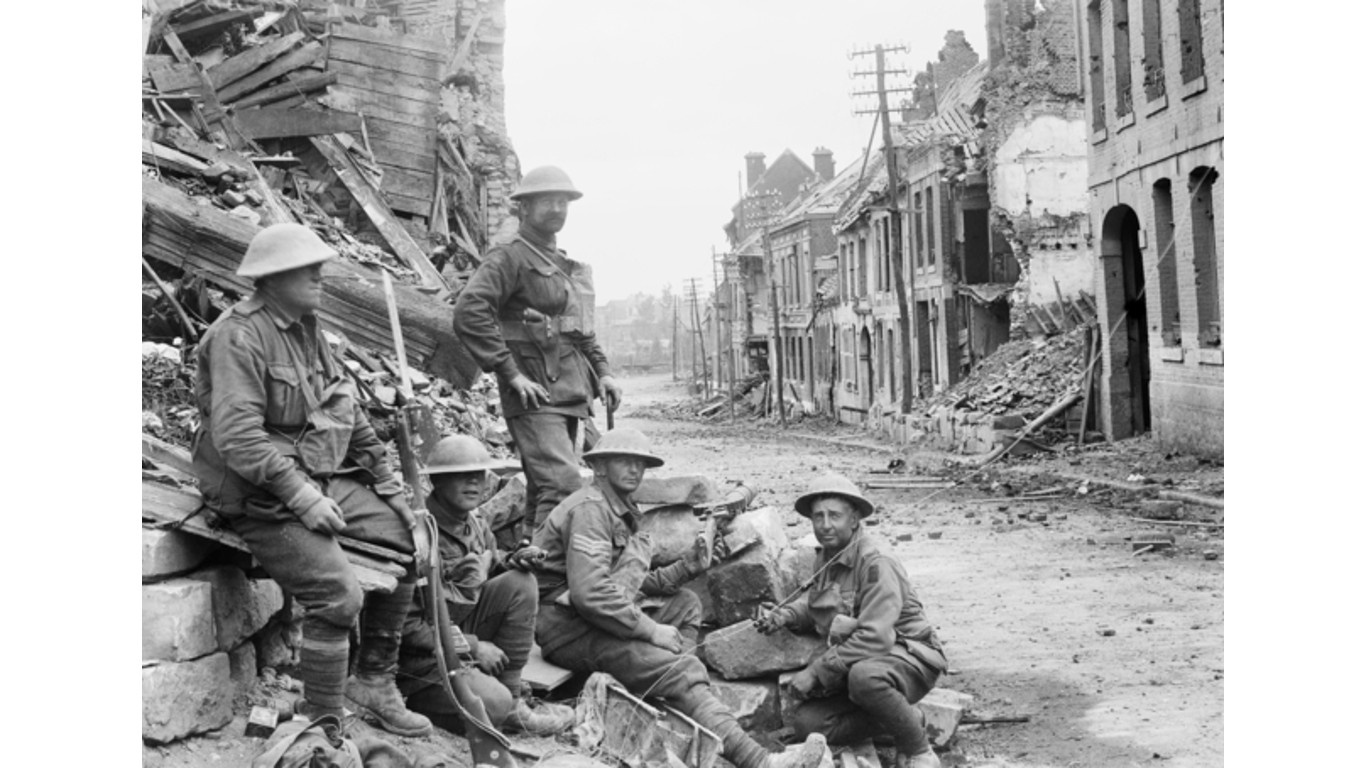
6. Hundred Days Offensive during World War I
> Estimated casualties: 1.46 million
> Combatants: Western Allies / German Empire
> Location: France
This series of massive Allied victories over the German army between August and November of 1918 led to the end of World War I. The Allied successes came at a heavy cost for both sides, however. The Allied casualties tallied up to about 1,070,000, and the Germans lost some 1,172,075, with many becoming prisoners of war.
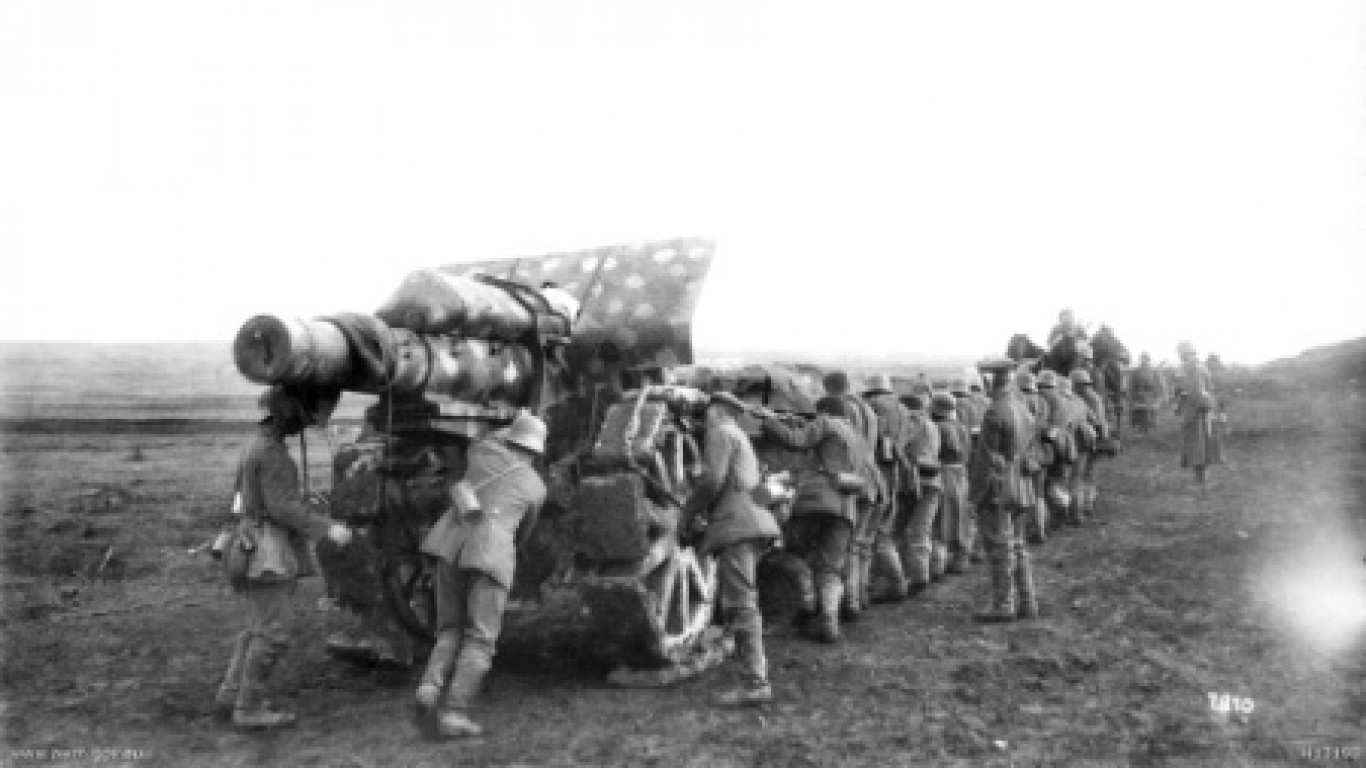
5. Operation Michael during World War I
> Estimated casualties: 1.55 million
> Combatants: Germany / France, Great Britain, United States
> Location: Belgium, France
Before the Allied forces ended World War I with the Hundred Days Offensive, the German military launched a spring offensive called Operation Michael in an attempt to knock the British out of the war. In March 1918, they kicked off a siege against the British Army on the Western Front in France. The British were initially overwhelmed, but after suffering many casualties and facing dwindling supplies, the British/French/American Entente managed to halt the German advance in April.

4. Battle of the Dnieper during World War II
> Estimated casualties: 1.58 million
> Combatants: Germany, Allies / Soviet Union, Ukraine
> Location: Soviet Union
One of the largest operations of World War II, the Battle of the Dnieper involved around 4 million troops in Ukraine. The battle raged on from August to December 1943. The Soviets managed to retake the eastern bank of the Dnieper from German forces with five of the Red Army’s fronts. However, about 1.2 million Soviet soldiers were killed or injured.
[in-text-ad-2]
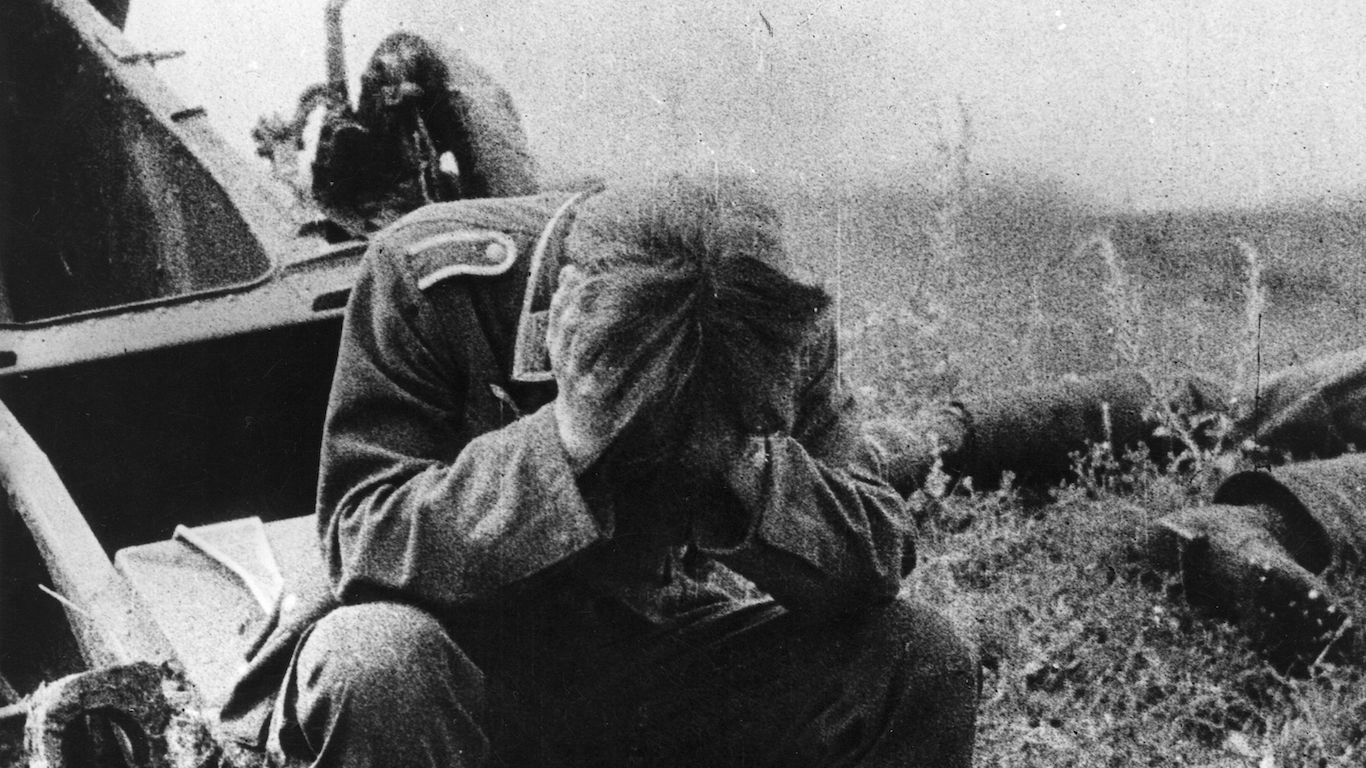
3.Battle of Moscow during World War II
> Estimated casualties: 1.6 million
> Combatants: Germany, Allies / Soviet Union
> Location: Soviet Union
This battle comprised two stretches of intense fighting between the Germans and the Soviets outside Moscow between October 1941 and the following January. The German defeat is considered to be the denouement of Nazi Germany’s ambitious Operation Barbarossa, and may be said to have ultimately doomed the Third Reich. German losses totaled between 250,000 and 400,000 dead or wounded, with the Red Army’s casualties estimated between 600,000 and 1,300,000 dead, wounded, or captured, despite their ultimate victory..
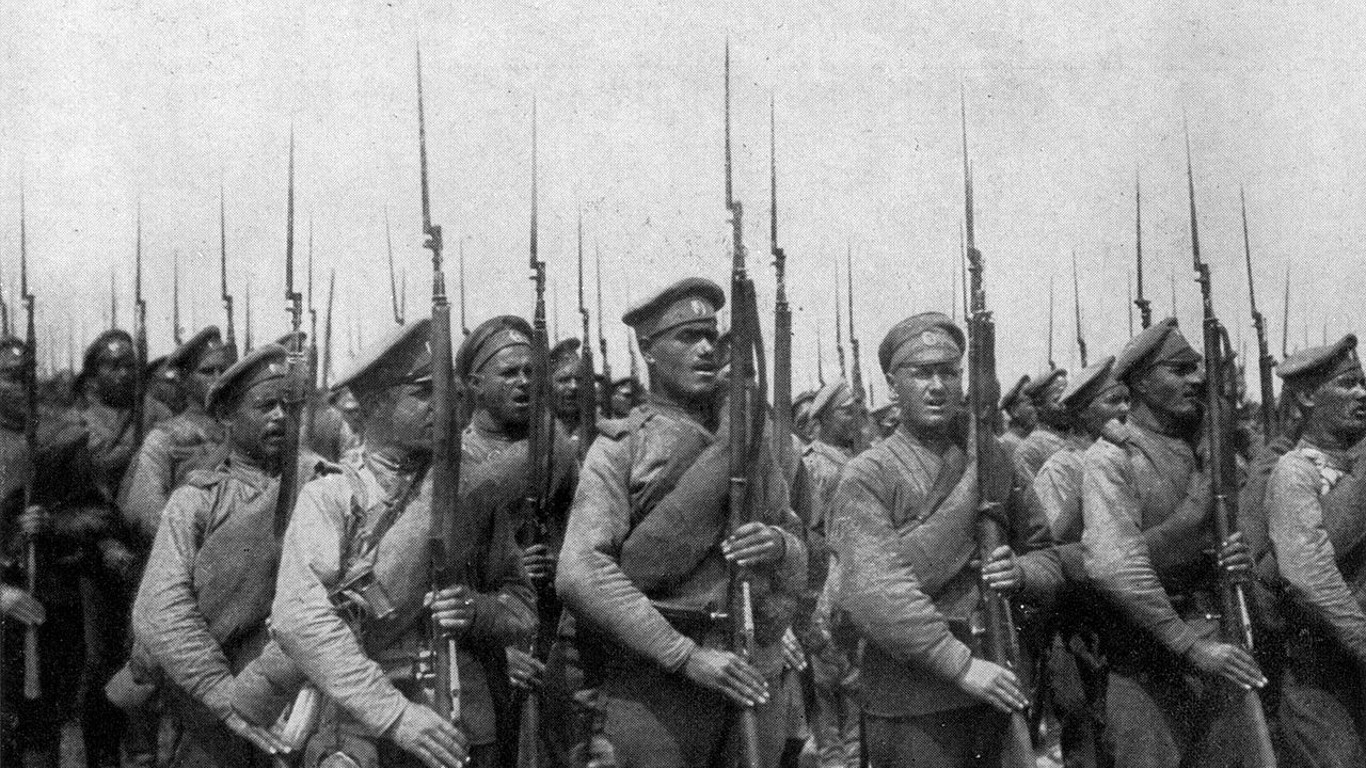
2. Brusilov Offensive during World War I
> Estimated casualties: 1.6 million
> Combatants: Russian Empire / Austria-Hungary, Germany, Ottoman Empire
> Location: Russia
The lethal Brusilov offensive was one of the most significant Russian successes of the war. It started with a Russian attack against the forces of Austria-Hungary and its allies on the Eastern Front in June 1916. Despite its battlefield victory, the Imperial Russian Army’s power was weakened from its heavy casualties – estimated at between 500,000 and a million – during the fighting, and the battle is considered to have contributed to Russia’s collapse the following year.
[in-text-ad]
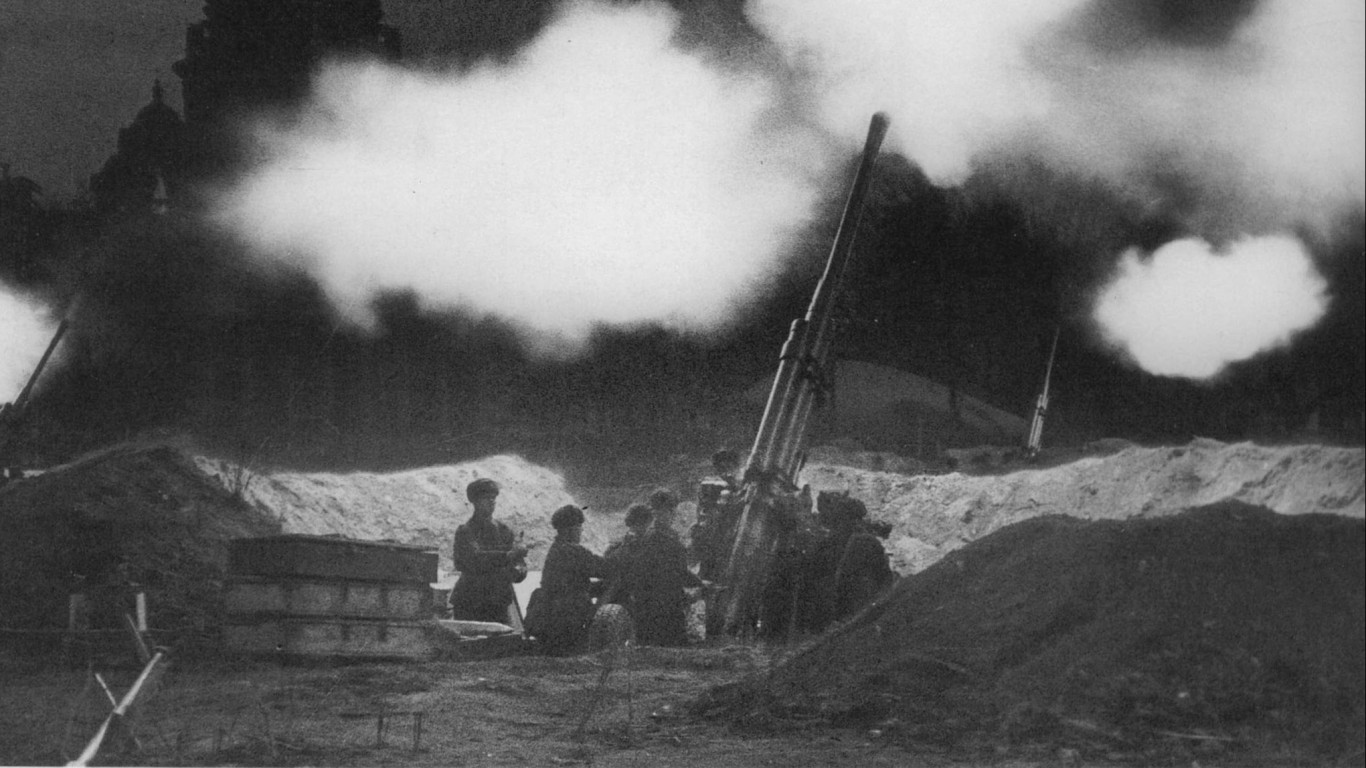
1. Siege of Leningrad during World War II
> Estimated casualties: 5.5 million
> Combatants: Germany, Finland / Soviet Union
> Location: Soviet Union
Lasting more than two years, this Axis blockade of Soviet Leningrad on the Eastern Front was arguably the costliest siege in history in terms of loss of life. The siege lasted from September 1941, when the Wehrmacht blocked all access to the city, until the Red Army was able to lift the siege in January 1944. Meanwhile, extreme famine plagued the Leningrad region, and hundreds of thousands died of starvation. Some 2,105 civilians were subsequently arrested for resorting to cannibalism.
Credit card companies are handing out rewards and benefits to win the best customers. A good cash back card can be worth thousands of dollars a year in free money, not to mention other perks like travel, insurance, and access to fancy lounges. See our top picks for the best credit cards today. You won’t want to miss some of these offers.
Flywheel Publishing has partnered with CardRatings for our coverage of credit card products. Flywheel Publishing and CardRatings may receive a commission from card issuers.
Thank you for reading! Have some feedback for us?
Contact the 24/7 Wall St. editorial team.
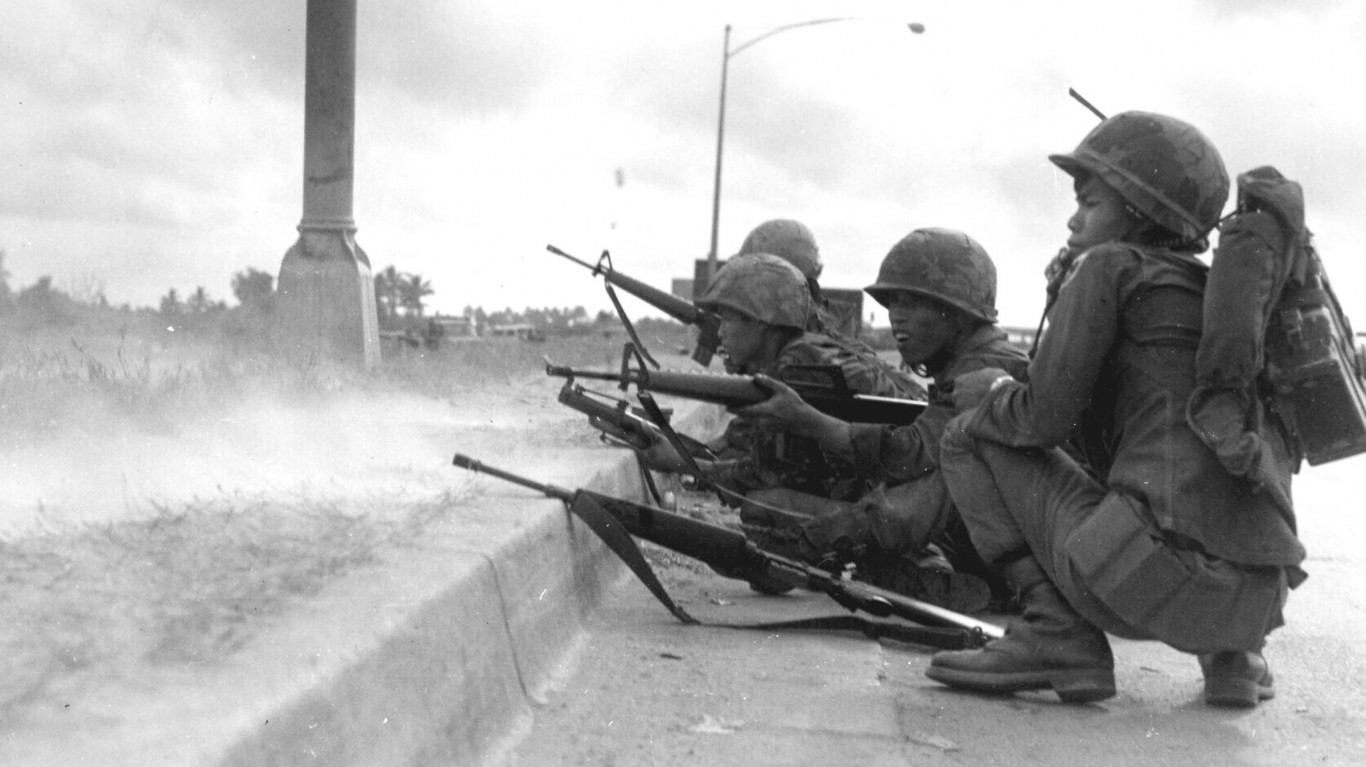
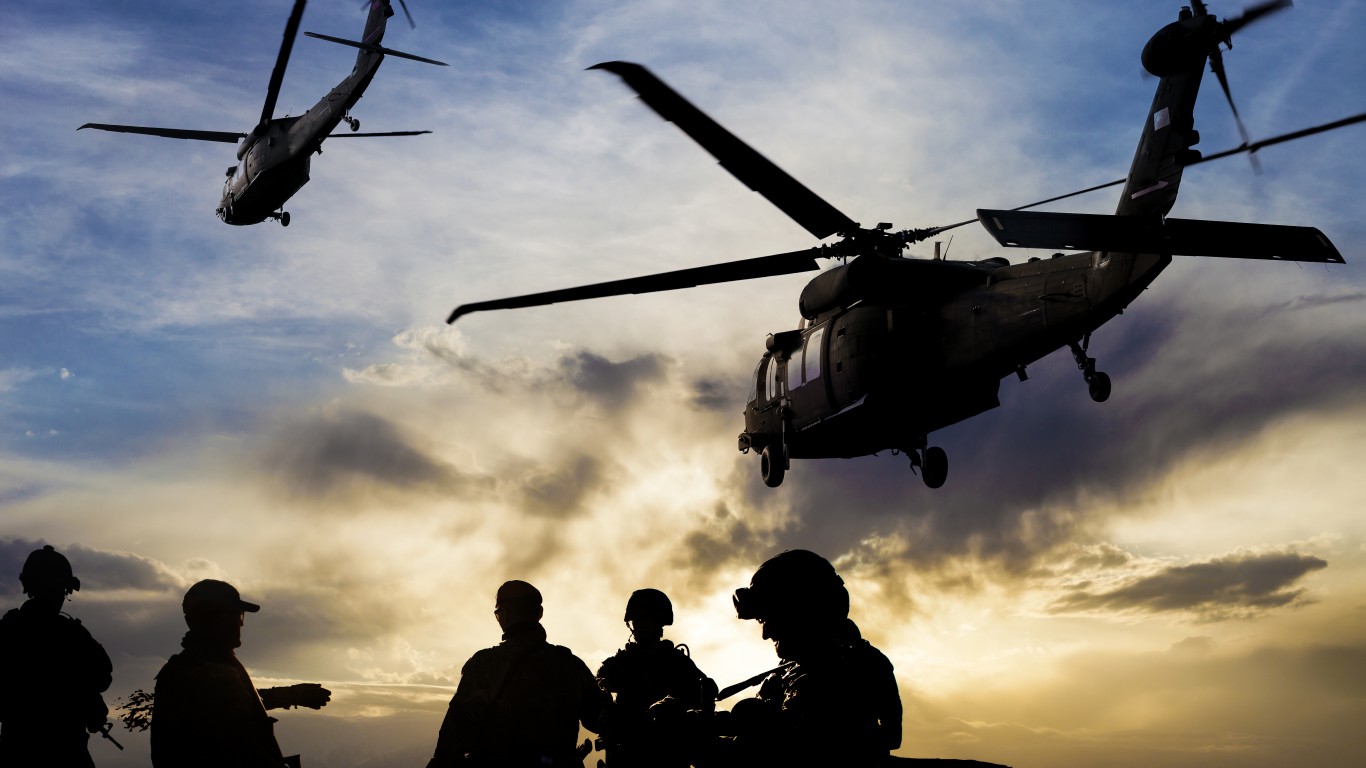 24/7 Wall St.
24/7 Wall St.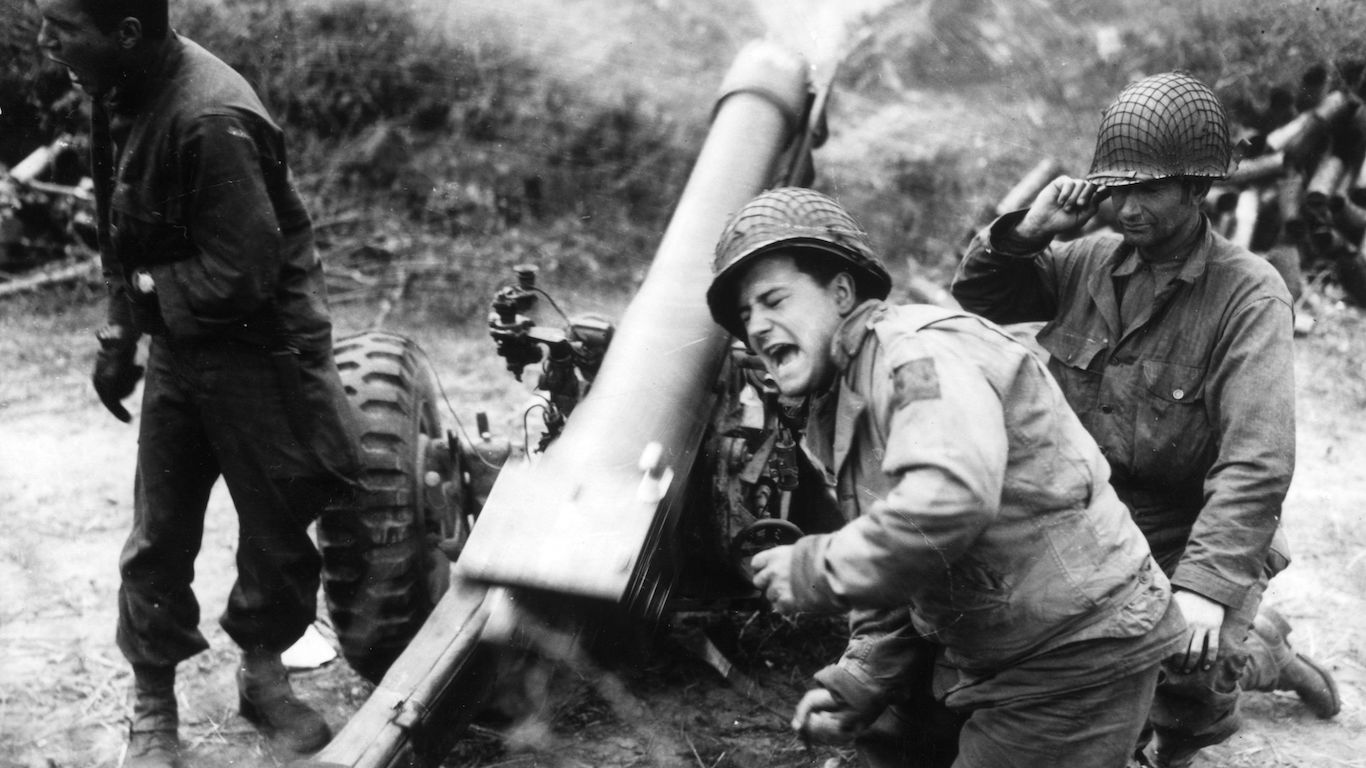 24/7 Wall St.
24/7 Wall St.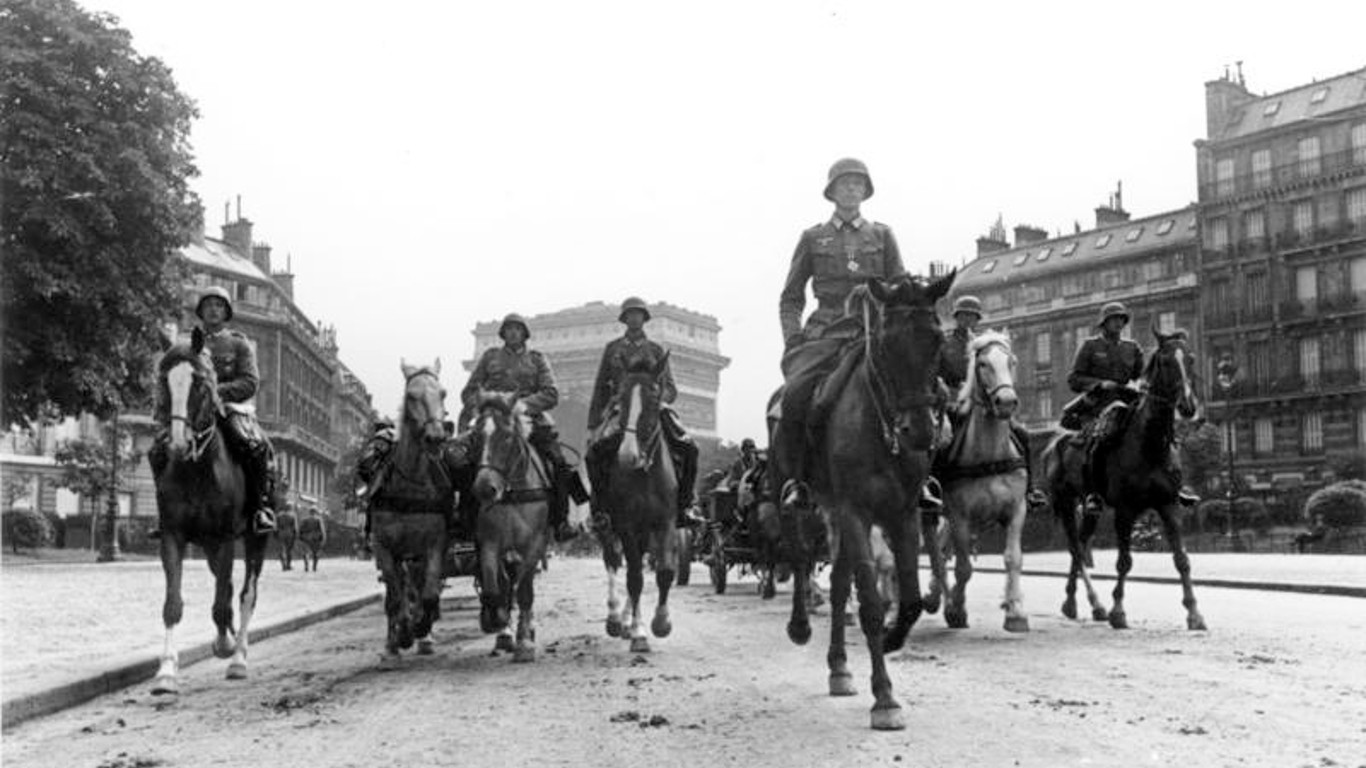
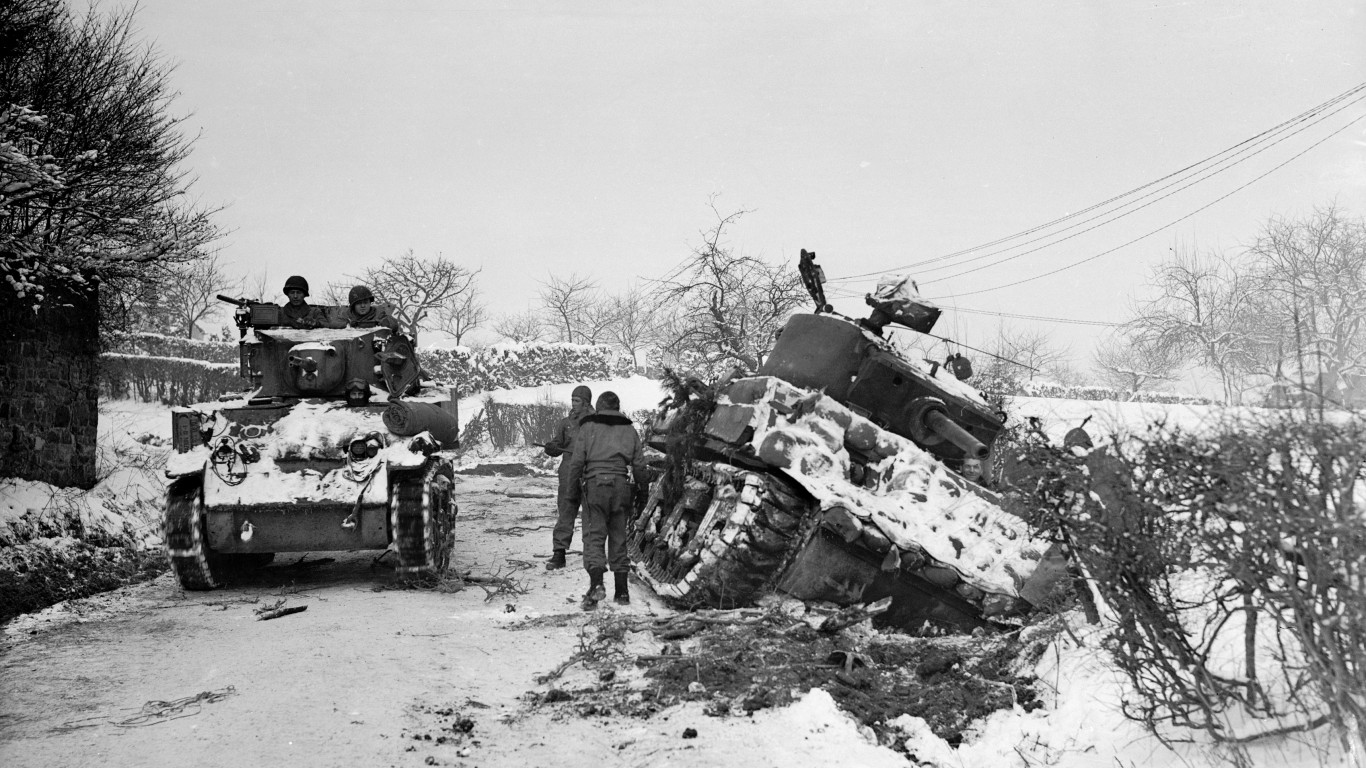 24/7 Wall St.
24/7 Wall St.